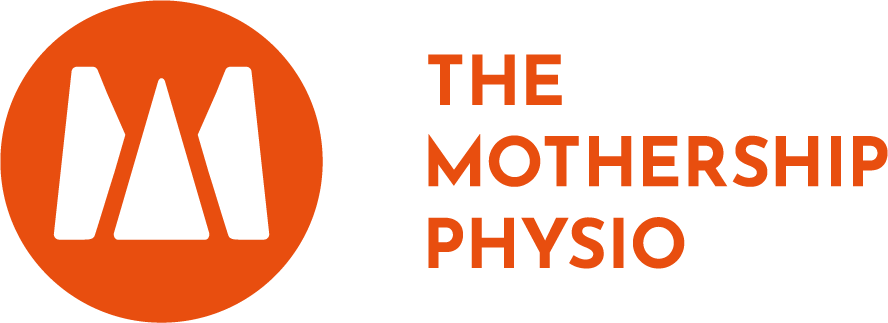How does breastfeeding affect your pelvic floor?
You’re breastfeeding or pregnant and want to feel informed about your postpartum recovery.
You may not have even realised that breastfeeding can affect your pelvic floor as everything seems fine down there.
Or maybe you’re already experiencing pelvic floor symptoms and want to know what you can do about it whilst continuing to breastfeed.
You may find yourself reaching to the internet for advice. This feels totally confusing because of the mass of conflicting information. So, what do you do now? Who should you trust?
We are specialist women’s health physios at The Mothership Physio and bring you this Q&A blog packed full of safe, trusted advice to help you on your breastfeeding journeys.
How do hormonal changes from breastfeeding affect the pelvic floor?
The hormonal shifts that occur during breastfeeding can affect the ability of your pelvic floor to function.
This is because to make breastmilk, prolactin rises, which in turn causes oestrogen to fall.
Now, oestrogen's role is to keep your vaginal area moist, lubricated, plump and help ensure that your pelvic floor muscle remains strong.
So, the reverse is also true: lower levels of oestrogen during breastfeeding can make your vagina feel dry and not as well lubricated, and the pelvic floor can feel weaker.
This makes it more likely for symptoms to show up regarding bladder, bowel and sex, and it also might affect your ability to exercise.
Common postpartum symptoms can include:
Sensations of burning and itching
Sensations of tearing during penetration
Vaginal dryness
Prolapse symptoms
Urinary incontinence
Rest assured, these temporary symptoms should not deter you from breastfeeding. Over time, as feedings decrease and periods return, your hormones will rebalance, and these symptoms should improve.
Research has found that breastfeeding will not have any long-term effects on urinary leakage or pelvic organ prolapse.
Your breastfeeding journey may last a few days or several years – it is an individual experience for everyone.
Our advice is to use this time while you’re breastfeeding to look after yourself and get informed about your postpartum body. The best thing you can do is book a postnatal MOT, which is a comprehensive assessment of your pelvic floor health, with your local pelvic health physio and sign up for our safe, physio-led online programme.
Is it true that the best time to do my pelvic floor exercises is when I'm breastfeeding?
Quit multi-tasking and doing your pelvic floor exercises!
Now we know that mums are amazing at multi-tasking but we want you to stop doing your pelvic floor exercises whilst breastfeeding or boiling the kettle or any other job in fact, and here’s why.
To train any muscle to get stronger, it must be challenged in a variety of different positions and be overloaded so it fatigues. Once a muscle is fatigued, it responds by developing more muscle fibres an become bigger in size.
I’m thinking of stopping breastfeeding as I’ve been told that my bladder leaks will stop straight away. Is that right?
No, it takes about three menstrual cycles for your hormones to normalise after the cessation of breastfeeding.
Whilst some mums' symptoms improve once oestrogen rises again, others find they do not as there are multiple reasons why bladder leaks or other pelvic floor symptoms occur.
Crucially, there's absolutely no evidence that breastfeeding will impact your pelvic floor healing in the long term.
It would be a mistake to stop breastfeeding because of symptoms alone.
Our advice is to get the support of a pelvic health physio to discover all that you can do to support your pelvic floor strength and improve urine leakage alongside continuing to breastfeed.
I’m sleeping really badly and struggling to find time to do anything for myself let alone do lots of pelvic floor squeezes. What’s your advice?
This sounds tough for you. Please don't add further stress on yourself by doing any pelvic floor squeezes at this stage.
Poor sleep hampers the pelvic floor's function. So, there won't be any benefit to endless squeezes during this time (or any time, in fact, as there's so much more to pelvic floor rehab than squeezes).
Your time may be better spent doing some calming work for your nervous system and emotional well-being, such as a short walk, getting outdoors, breath work, or other things that bring you joy.
Remember, you're not alone in this. A pelvic health physiotherapist can provide you with the professional support and guidance you need, and when the time comes back, then you can dedicate your energy into your postpartum rehab.
Sex is painful and my vagina generally feels sore from vaginal dryness. What can I do to help this?
We recommend you try YES moisturiser and lubricants. They have a lovely range of organic products with a lovely pH for your vulva.
Use the YES moisturiser every day, which is an excellent habit to get into anyway for perimenopause. Then, use the lube for intimacy and sex. Together, they will improve friction and glide in that area to stop any pain and improve pleasure.link?
If lubrication doesn't help, then there may be other reasons that are causing pain with intercourse and it is recommended to book a pelvic health physio for a sensitive examination with individualised support.
I want to continue breastfeeding for another year, but I'm struggling to reach 5k without discomfort and heaviness. I'm good at doing my daily sets of squeezes in bed; what else can I do?
Well done. Your commitment to continue breastfeeding for another year is super inspiring! However, if you're struggling to reach 5k without discomfort and heaviness, there are additional steps you can take.
It's likely that your pelvic floor strength has not fully returned yet (not just because you're breastfeeding but also because basic pelvic floor exercises will only get you so far!). It is essential to listen to the warning signs of heaviness and discomfort. Reduce the distance you're running and include functional pelvic floor exercises, such as squats, lunges, and single-leg strengthening, alongside the more isolated pelvic floor work in your day. This comprehension approach will help your pelvic floor strengthen and help you cope with the forces put through it during a typical day of 'mum life' and while you are doing sport.
As an example, Claire is also breastfeeding and has decided to limit her runs to 5k, given her current pelvic floor strength. As her body and pelvic floor adapt to this exercise load, she will gradually increase the speed and distance of her runs while incorporating training drills that target the pelvic floor in various ways. This is a long-term approach, but following a dedicated programme like ours can provide valuable support and guidance for your journey.
The Mothership Physio offers a refreshingly different type of online postnatal exercise and education programme that’s perfect for mums at all stages of postpartum and every type of birth.
We provide safe modifications, step-by-step guidance and education on your body through the programme. So you feel confident, in control and empowered throughout your postpartum journey.
What you’ll get:
✅Online access to 15-minute physio-led pre-recorded workouts including cardio, pilates, core strength, pelvic floor and well-being
✅Guidance from two womens’ health physios
✅C-section, prolapse and diastasis-recti aka tummy gap safe workouts
✅Motivation and support from like-minded mums at The Mothership Physio Village
✅Ask us anything in our Whatsapp group and at our Monthly Live Clinic call
When is it best to join the Mothership online postnatal programme to get strong again and get back to doing the things you love?
We recommend starting the programme 6 weeks or more after vaginal delivery, or 10 weeks after c-birth.
You can choose between a 1 or 3 month subscription and join risk free with a 10-day money back guarantee.

